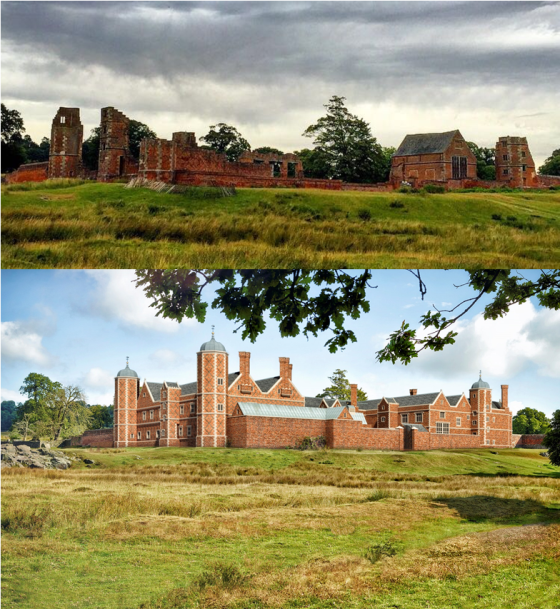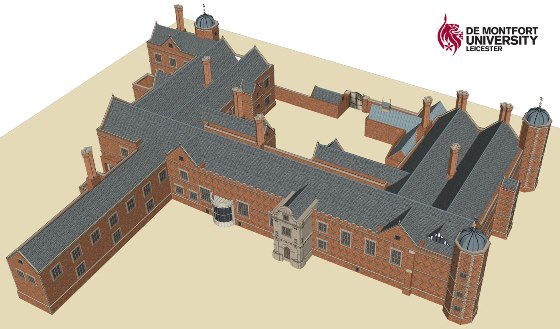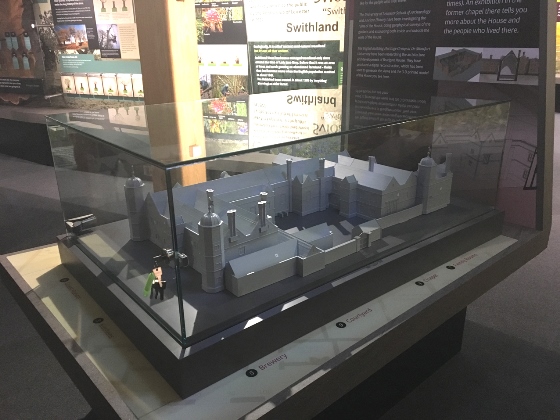Design experts from De Montfort University Leicester (DMU) have used 3D technology to recreate a 16th century Leicestershire mansion which now lies in ruins.
Bradgate House, in Bradgate Park, has for many years been nothing more than a collection of crumbling brick walls, towers and staircases, having been abandoned by owners the Grey family in the 18th Century.

A shot of Bradgate House as it currently looks (above) contrasted with the new 3D model created by DMU (below)
Visitors to the site have been faced with a challenge to imagine the great property as it was in its heyday.
But now DMU's Digital Building Heritage Group has used 3D technology to design and physically print a replica of the Tudor mansion – which was once home to former English Queen Lady Jane Grey - in its former glory.
The team has now presented the model to the park's visitor centre.

DMU reader in digital technology Douglas Cawthorne said: "We have been carrying out research on the history of this relatively under-studied building involving practical field work and laser scanning the remains of the building.
"We also carried out archival research to piece together how its innovative use of technology and ambitious design was at the forefront of aristocratic English architecture, and how its architects and patrons imported Renaissance ideas from the continent in the early 16th century.
"The building evolved in number of phases, driven by the political ambitions of the Grey family, their rivalry with the other great Leicestershire landowning family the Hastings, and was also constrained by the fluctuations in their finances and favour at court."
RELATED NEWS
First 3D model of church where Richard III remains were laid created by DMU
Revealed: The church where Richard III was buried
Leicester named as a top 10 UK city to live and work in
Mr Cawthorne said the model was printed in a series of eighteen removable parts, to allow future changes should historical interpretation of the remains of the building change over time.
He added: "With 3D printing this provides an economic form of lasting adaptability, as parts can be modified on the computer and 3D printed and inserted as required.
"The model is monochrome grey to colour coordinate with the rest of the exhibition design and to focus the viewers' attention on the physical form of the building which is not readily apparent when one goes out into the park and looks at the ruins themselves."

Accompanying the model are photorealistic, full-colour 2D reconstructions of the exterior of the building as it would have looked around 1700.
Mr Cawthorne added: "It may be that models produced using new techniques like 3D printing will in themselves become historical objects in their own right, not only as simplified and abstracted interpretations intended to more clearly convey an understanding of what is no longer present but also as exemplars of the use of new technologies – but that remains to be seen.
"In the meantime we expect the Bradgate Park Trust's new 3D printed model of Bradgate House, produced using the latest historical and architectural research will help visitors better understand this building, the family that occupied it and their place in English architectural and social history."
Posted on Tuesday 2 August 2016